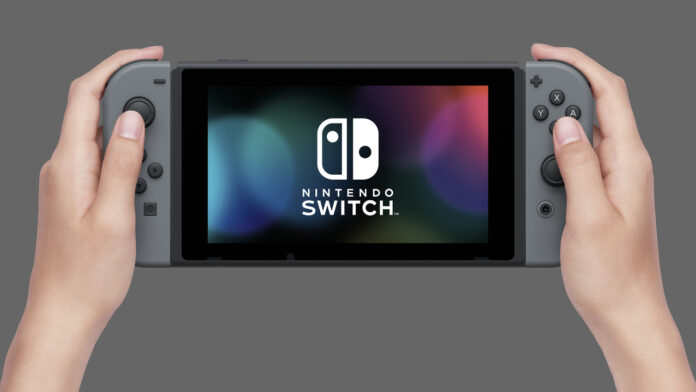The Nintendo Switch has become one of the most popular gaming consoles on the market today. With its versatility and wide range of games, it has captured the hearts of gamers around the world.
However, like any electronic device, the Nintendo Switch can sometimes encounter issues affecting its performance. That’s why it’s important to restart your Nintendo Switch regularly. Restarting your console can help resolve common issues and keep it running smoothly. In this article, we will explore the benefits of restarting your Nintendo Switch and provide a step-by-step guide on how to do it.
Restarting your Nintendo Switch can have several benefits. Firstly, it can help clear the cache and free up system resources. Over time, the cache can become cluttered with temporary files and data from previous gaming sessions. This can slow down your console and affect its performance. Restarting your Nintendo Switch can clear the cache and give your console a fresh start. This can help improve loading times, reduce lag, and ensure a smoother gaming experience.
Restarting your Nintendo Switch can help resolve minor software glitches and bugs. Like any other electronic device, the Nintendo Switch can sometimes encounter software issues affecting its performance. These issues can range from minor bugs to more serious crashes. Restarting your console can refresh the system and potentially resolve these issues. This can help prevent crashes, freezes, and other frustrating problems interrupting your gaming sessions.
Step-by-Step Guide to Restarting Your Nintendo Switch
Restarting your Nintendo Switch is a simple process that can be done in a few easy steps. Here is a step-by-step guide on how to restart your Nintendo Switch:
- Press and hold the power button on the top of your Nintendo Switch console.
- A menu with several options will appear on the screen.
- Select “Power Options” from the menu.
- Another menu will appear with three options: “Sleep Mode,” “Restart,” and “Power Off.”
- Select “Restart” from the menu.
- Your Nintendo Switch will now begin the restart process.
- Wait for your console to restart fully.
- Once the restart is complete, you can use your Nintendo Switch again.
In addition to the above method, there are other ways to restart your Nintendo Switch. If your console is frozen or unresponsive, you can perform a hard reset by holding down the power button for 12 seconds. This will force the console to shut down, and then you can turn it back on. Another option is to put your Nintendo Switch into sleep mode and then wake it up again. To do this, press the power button once to put it into sleep mode, and then press it again to wake it up.
Troubleshooting Common Issues with Your Nintendo Switch
Restarting your Nintendo Switch can help resolve common issues that you may encounter while using the console. Here are some common issues that can be resolved by restarting your Nintendo Switch:
- Slow performance: If your Nintendo Switch is running slowly or experiencing lag, restarting it can help clear the cache and free up system resources. This can help improve loading times and ensure a smoother gaming experience.
- Crashes and freezes: If your Nintendo Switch is crashing or freezing during gameplay, restarting it can help resolve these issues. By refreshing the system, you can potentially clear any software glitches or bugs that may be causing the crashes or freezes.
- Connection issues: If you are experiencing connection issues with your Nintendo Switch, such as difficulty connecting to Wi-Fi or Bluetooth devices, restarting it can help resolve these issues. A simple restart can sometimes help reset the network settings and establish a stable connection.
In addition to restarting your Nintendo Switch, there are other troubleshooting tips that you can try if you encounter issues with your console. Firstly, make sure that your console is running the latest firmware version. Updating your firmware can help resolve compatibility issues and improve performance. Secondly, check for any software updates for your games. Developers often release patches and updates to fix bugs and improve gameplay. If the issue persists, you can try resetting your console to factory settings. This will erase all data on your console, so make sure to back up your game saves and other important data before doing this. If you’re unsure how to do this, we have a handy guide of how to factory reset your Nintendo Switch.
How to Perform a Hard Reset on Your Nintendo Switch
Sometimes, a simple restart may not be enough to resolve certain issues with your Nintendo Switch. In such cases, you may need to perform a hard reset. A hard reset is a more forceful way of restarting your console and can help resolve more serious issues. Here is a step-by-step guide on how to perform a hard reset on your Nintendo Switch:
- Press and hold the power button on the top of your Nintendo Switch console.
- Continue holding the power button for 12 seconds.
- The console will shut down completely.
- Wait for a few seconds, and then press the power button again to turn on your Nintendo Switch.
- Your console will now start up as usual.
A hard reset should only be performed as a last resort, as it can potentially cause data loss or other issues. It is always recommended to try a regular restart first before resorting to a hard reset. If the issue persists even after a hard reset, it may be necessary to contact Nintendo customer support for further assistance.
Tips for Maintaining Your Nintendo Switch’s Performance
In addition to regularly restarting your Nintendo Switch, there are several tips you can follow to maintain its performance and keep it running smoothly. Here are some tips for maintaining your Nintendo Switch’s performance:
- Keep your console updated: Regularly check for firmware updates for your Nintendo Switch and make sure to install them. Firmware updates often include bug fixes, performance improvements, and new features that can enhance your gaming experience.
- Manage your storage: The Nintendo Switch has limited internal storage, so managing your storage space wisely is important. Delete any games or apps that you no longer use to free up space. You can also expand your storage by using a microSD card.
- Clean your console: Dust and debris can accumulate on your Nintendo Switch over time, which can affect its performance. Regularly clean your console using a soft, lint-free cloth. Avoid using harsh chemicals or abrasive materials that can damage the console.
- Avoid overheating: Overheating can cause your Nintendo Switch to slow down or crash. Make sure to play in a well-ventilated area and avoid covering the console or blocking the vents. If your console feels hot to the touch, give it a break and let it cool down.
- Use a screen protector: The Nintendo Switch’s screen is prone to scratches and smudges. Use a screen protector to protect the screen from scratches and keep it clean. This can help maintain the clarity and responsiveness of the touchscreen.
Updating Your Nintendo Switch’s Firmware: Why It’s Important
Updating your Nintendo Switch’s firmware is important for several reasons. Firstly, firmware updates often include bug fixes and performance improvements that can enhance your gaming experience. By keeping your console updated, you can ensure that you are running the latest version of the software and take advantage of any improvements or new features that have been released.
Secondly, updating your Nintendo Switch’s firmware can help resolve compatibility issues. As new games and apps are released, developers may change the software which require an updated firmware version. If you are running outdated firmware, you may encounter issues when playing certain games or using certain features. Updating your firmware ensures that your console is compatible with the latest games and apps.
Updating your Nintendo Switch’s firmware is a simple process. Here is a step-by-step guide on how to update your Nintendo Switch’s firmware:
- Connect your Nintendo Switch to the internet.
- From the home menu, select “System Settings.”
- Scroll down and select “System.”
- Select “System Update.”
- If an update is available, select “Update.”
- Wait for the update to download and install.
- Once the update is complete, your Nintendo Switch will restart.
It is recommended to keep your Nintendo Switch connected to the internet and check for updates regularly. Nintendo often releases firmware updates to address security vulnerabilities and improve system stability, so it’s important to stay up to date.
How to Save Your Game Progress Before Restarting Your Nintendo Switch
Before restarting your Nintendo Switch, it’s important to save your game progress to avoid losing any unsaved data. The Nintendo Switch has a built-in auto-save feature that automatically saves your progress in most games. However, not all games support auto-save, so it’s always a good idea to manually save your game before restarting your console. Here is a step-by-step guide on how to save your game progress:
- Press the home button on your Nintendo Switch to pause the game.
- Select the game you want to save from the home menu.
- Once the game is open, look for the save option in the game’s menu.
- Select the save option to save your game progress.
- Wait for the save to complete.
- Once the save is complete, you can restart your Nintendo Switch safely.
It’s important to note that some games may have specific save requirements or limitations. Make sure to familiarize yourself with the save options and requirements for each game you play to ensure that your progress is saved properly.
Common Mistakes to Avoid When Restarting Your Nintendo Switch
When restarting your Nintendo Switch, there are some common mistakes that you should avoid to prevent any damage to your console. Here are some common mistakes to avoid when restarting your Nintendo Switch:
- Pulling out the power cord: When restarting your Nintendo Switch, it’s important to use the proper method and not simply pull out the power cord. Pulling out the power cord while the console is still on can cause data loss or other issues. Always use the menu’s power button or the appropriate restart option to restart your console.
- Restarting too frequently: While it’s important to restart your Nintendo Switch regularly, it’s also important not to overdo it. Restarting your console too frequently can strain the hardware unnecessarily and potentially cause damage. Restarting your console once every few days or whenever you encounter performance issues is recommended.
- Not saving your game progress: Before restarting your Nintendo Switch, always make sure to save your game progress. Failing to save your progress can result in the loss of unsaved data, which can be frustrating and time-consuming to recover. Take the time to save your game before restarting to avoid any potential loss.
- Ignoring firmware updates: Firmware updates are important for maintaining the performance and compatibility of your Nintendo Switch. Ignoring firmware updates can result in compatibility issues and missed improvements or features. Always make sure to check for updates regularly and install them when available.
How to Transfer Your Game Data to a New Nintendo Switch
If you are upgrading to a new Nintendo Switch or need to replace your current console, you may want to transfer your game data to the new device. Transferring your game data allows you to continue playing your games and keep your progress intact. Here is an explanation of how to transfer your game data to a new Nintendo Switch:
- Ensure your old and new Nintendo Switch consoles are updated to the latest firmware version.
- Go to “System Settings” on your old Nintendo Switch and select “Data Management.”
- Select “Transfer Your Save Data.”
- Follow the on-screen instructions to prepare your old Nintendo Switch for transfer.
- On your new Nintendo Switch, select “System Settings” and “Data Management.”
- Select “Transfer Your Save Data.”
- Follow the on-screen instructions to transfer your game data from your old Nintendo Switch to your new one.
It’s important to note that not all game data can be transferred. Some games have restrictions on transferring save data, so make sure to check the specific requirements for each game. Additionally, some games may require a Nintendo Switch Online subscription to transfer save data.
Enjoying Your Nintendo Switch to the Fullest by Restarting it Regularly
In conclusion, restarting your Nintendo Switch regularly is important to maintain its performance and resolve common issues. Restarting your console can clear the cache, resolve software glitches, and ensure a smoother gaming experience. It’s also important to keep your console updated, save your game progress before restarting, and avoid common mistakes that can damage your console. By following these tips and restarting your Nintendo Switch regularly, you can enjoy your gaming experience to the fullest. So, don’t forget to give your Nintendo Switch a fresh start occasionally and keep gaming!



